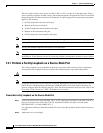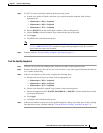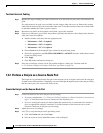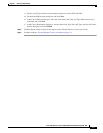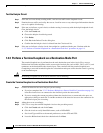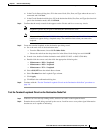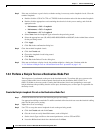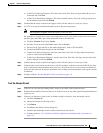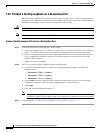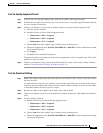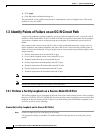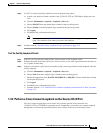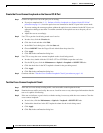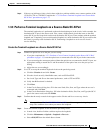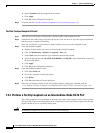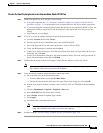
1-12
Cisco ONS 15310-CL and Cisco ONS 15310-MA Troubleshooting Guide, R7.0
Chapter 1 General Troubleshooting
1.2.5 Perform a Facility Loopback on a Destination Port
1.2.5 Perform a Facility Loopback on a Destination Port
The final facility loopback test is performed on the last port in the circuit— in this case the port in the
destination node. Completing a successful facility loopback on this port isolates the possibility that the
destination-node cabling, card, or LIU is responsible for a faulty circuit.
Caution Performing a loopback on an in-service circuit is allowed but is service-affecting.
Note Loopbacks operate only on ports in the OOS,MT administrative state.
Create a Facility Loopback Circuit on a Destination Port
Step 1 Connect an electrical test set to the port you are testing:
a. If you just completed the “1.2.4 Perform a Hairpin Test on a Destination-Node Port” procedure on
page 1-10, leave the electrical test set connected to the electrical port in the destination node.
b. If you are starting the current procedure without the electrical test set connected to the electrical
port, use appropriate cabling to attach the Tx and Rx terminals of the electrical test set to the
electrical interface panel.
c. Adjust the test set accordingly.
Step 2 Use CTC to create the facility loopback on the port being tested:
a. In node view, double-click the card where you are performing the loopback, then click the
appropriate tab:
• Maintenance > DS1 > Loopback
• Maintenance > DS3 > Loopback
• Maintenance > EC1 > Loopback
b. Select Facility from the Loopback Type column for the port being tested. If you are creating a
loopback on a multiport card, select the row appropriate for the desired port.
c. Click Apply.
d. Click Yes in the confirmation dialog box.
Note It is normal for a 2.7.156 LPBKFACILITY (DS1, DS3) or 2.7.157 LPBKFACILITY (EC1)
condition to appear during loopback setup. The condition clears when you remove the loopback.
Step 3 Continue with the “Test the Facility Loopback Circuit” procedure on page 1-13.



